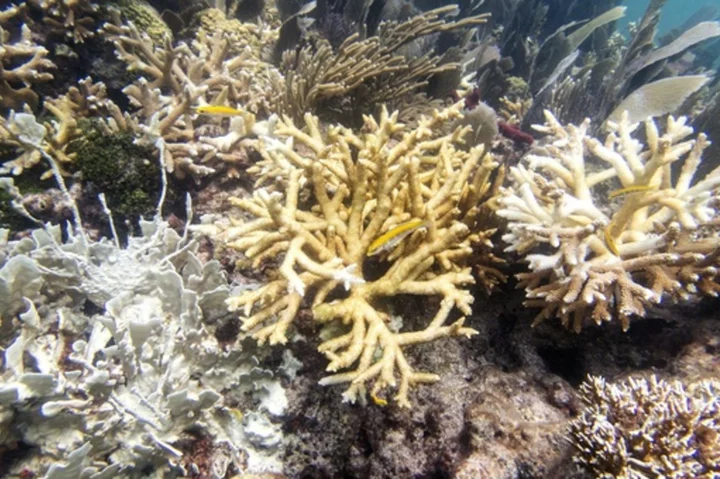With hundreds of millions of people visiting the U.S. National Parks every year, it’s no wonder there are rules and regulations in place to keep the parks safe and clean. National Parks are full of nature and wildlife that need to be protected; the regulations are also intended to ensure visitors don’t hurt themselves. And while there are plenty of standard rules you would expect (like not messing with the wildlife and following the general Leave No Trace guidelines) there are also stranger rules you may not know about.
1. No Giving Birth in the Saline Valley Hot Springs // Death Valley National Park
Giving birth—or even attempting to—in the Saline Valley Hot Springs is forbidden. Other rules at this Death Valley hot spring include not using the pools when you’re sick, mandating that children who aren’t potty-trained wear waterproof diapers, and banning human bodily waste from the springs. Pets also aren’t permitted within 50 feet of the pools. But the specific law against giving birth takes the cake for the weirdest rule.
2. No Pets on Your Rafting Trip // Grand Canyon National Park
Grand Canyon National Park has a whole page on their website regarding rules for visiting with your pet. It makes sense, as the park’s rocky terrain, rapid waters, and unpredictable wildlife can be dangerous for both people and their four-legged companions. Pets are also unpredictable; for example, a runner or a mule could spook them, leading to an accident, or your creature could chase and harass the park’s resident wildlife.
One very specific rule bars cats, dogs, and other domestic animals from joining you on a rafting trip down the Colorado River. In fact, no pets are allowed below the rim on the canyon except for service animals. This rule is probably for the best, as the leading cause of death in national parks is drowning.
3. No Burying Your Poop Less Than 3 Inches Deep // Shenandoah National Park
Shenandoah National Park is a beautiful, waterfall-filled getaway just 75 miles from Washington, D.C. Its beauty attracts visitors year-round, many of whom choose to camp. Because of this, there are federal laws regarding camping in this park, such as how long you can stay and where you can set up camp. The sanitation section of these rules prohibits the possession of “food or beverage in discardable glass containers.” It also outlaws urination or defecation within 10 yards of a stream or trail, and specifies that fecal matter must be buried in a hole and covered with at least 3 inches of soil.
4. No Teasing Animals While They Breed // All National Parks
It’s rude to harass animals while they breed—and it’s also illegal. The full federal law prohibits “the feeding, touching, teasing, frightening or intentional disturbing of wildlife nesting, breeding, or other activities.” It’s clear that the focus of this rule is not to disturb the wildlife and invade their habitat or disrupt their behavior, but the teasing part definitely stands out.
It’s always best to just leave the animals alone. In 2018, a man was arrested for harassing a bison at Yellowstone National Park when he taunted and lunged at the animal, trying to start a fight. This type of behavior is dangerous to both the wildlife and other humans at the park.
5. No Intimidating Golfers or Tennis Players // Washington, D.C. National Parks
It takes a lot of focus to play a great game of golf or tennis. To play these sports in one of the National Parks in the D.C. area, you need to get a permit and pay a required fee. Once you’re an authorized player, you won’t have to worry about anyone bothering you: No one can legally trespass, intimidate, harass, or otherwise interfere with you.
In addition to needing a permit to play these sports, you also need a special permit if you want to fly a model powered plane from anywhere in a D.C. National Park.
6. No Balloons Without a Permit // Joshua Tree National Park
There are no balloons of any kind allowed in the beautiful desert of Joshua Tree National Park (unless you get a permit).e. Water balloons and helium balloons are considered litter; biologists also worry that they could be ingested by wildlife. Due to their flammable nature, sky lanterns are illegal within the fire-prone park.
The National Park Service discourages the use of sky lanterns in all parks, for the reasons listed above. They encourage people who do release paper lanterns to do so under certain parameters.
7. No Swearing or Making Obscene Gestures // All National Parks
Disorderly conduct is prohibited in National Parks, but what exactly does that mean? Federal law defines it with wording like “intent to cause public alarm” and “recklessly creating a risk.” However, another part of the law proclaims that anyone who uses “language, an utterance, or gesture, or engages in a display or act that is obscene” is engaging in illegal activity. Park rangers probably won’t be apprehending every person who swears in a park, but it’s a good reminder to keep things respectful and consider your surroundings.
8. No Building Cairns or Disturbing Existing Ones // All National Parks
Cairns are vertically stacked piles of rocks that you’ve probably seen before on a hike. They aren’t just art—park officials place them there to mark trails or other significant areas. Because of their purpose, it’s illegal for park attendees to build their own cairns or to mess with ones they find, as that could lead hikers dangerously astray. Constructing cairns also disrupts the local ecology.
Some parks don’t use cairns to mark trails and may erect some for decoration only. Because of this distinction, it’s important to check a park’s website or signage before following cairns.
9. No Moving or Disturbing Dead Fish // All National Parks
It probably makes sense that you’re prohibited from “possessing, destroying, injuring, defacing, removing, digging, or disturbing” wildlife from its natural state. But you may be surprised to learn that it’s illegal to touch dead wildlife as well. Collecting dead fish that washed ashore, snagging an abandoned bird nest, and pocketing some shed deer antlers are all off-limits. Park officials want to make sure that no aspect of wildlife and their environment are disturbed. Similarly, it is illegal to introduce any wildlife into a park area’s ecosystem.
10. No Rolling a Rock Down a Hill // All National Parks
Just like you can’t disturb a dead fish from its natural state, you also can’t disturb rocks. The same federal law states that tossing or rolling rocks (or other items for that matter) is not allowed in National Parks. What you might think of as an innocent stone throw could disrupt the natural habitat around you. The law specifically forbids rocks to be thrown “inside caves or caverns, into valleys, canyons, or caverns, down hillsides or mountainsides, or into thermal features.”
This article was originally published on www.mentalfloss.com as 10 Strange and Surprisingly Specific National Park Rules.









